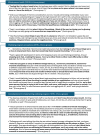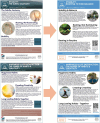Patience is a virtue: lessons from a participatory approach to contextually tailor and co-create an employee wellness intervention for community health educators
- PMID: 41048291
- PMCID: PMC12491061
- DOI: 10.3389/fpubh.2025.1634264
Patience is a virtue: lessons from a participatory approach to contextually tailor and co-create an employee wellness intervention for community health educators
Abstract
Introduction: Community health educators (CHE) translate empirical health evidence into actionable information to improve the health and wellbeing of communities, including underserved populations. However, the wellbeing of CHE themselves is threatened by chronic work-related stress. One understudied CHE cohort are employees of the federal Cooperative Extension System (herein: Cooperative Extension). The objective of this present study was to co-create a wellness intervention that is feasible and acceptable to CHE of Cooperative Extension.
Methods: Applying a co-creation method, we first gathered formative data from an ongoing integrated research-practice partnership (IRPP) with CHE of Cooperative Extension to guide adaptations on intervention content, dose, and delivery. IRPP members shared key intervention considerations which informed a sequential exploratory mixed-methods approach. To garner contextual considerations and phenomena, we conducted four focus group sessions with CHE from nine different states (N=21, n=4 to 6 per session). We built a follow up survey based on qualitative findings to inform intervention delivery.
Results: Members of the IRPP preferred holistic wellbeing, i.e., flourishing, as a comprehensive target for a CHE wellness intervention. Eighty-one percent (n=17) of focus group participants (90% Female, 62% White) completed the follow up survey. Focus group findings demonstrated a desire for a multi-component intervention (e.g., education, accessible group yoga practices) to address the multiple domains of flourishing and provided guidance on imagery and messaging of recruitment materials. Notably, participants emphasized scheduling as the greatest barrier to overcome. One participant shared that "I think there are probably solutions for this, but it may take a lot of patience while figuring it out." Survey data elucidated intervention delivery preferences including timing for the intervention (47% preferring a Jan-Mar launch), time of day (early morning ranked highest); facilitator (52% yoga teachers, 24% peer CHE, 0% administrators); as well as the order of content delivery in intervention sessions.
Discussion: Data from co-creation methods with CHE captured often overlooked nuance important for implementation, particularly tailoring the timing of intervention delivery. Beginning with the end in mind and taking careful consideration of contextual factors may improve feasibility and acceptability of intervention characteristics and ultimately increase reach, representativeness, and efficacy.
Keywords: adaptation; co-creation; dissemination; flourishing; holistic; implementation; wellbeing; yoga.
Copyright © 2025 Frazier, Pullin and Harden.
Conflict of interest statement
The authors declare that the research was conducted in the absence of any commercial or financial relationships that could be construed as a potential conflict of interest.
Figures








References
-
- NIH . RePORTER > “community health worker”. Available online at: https://reporter.nih.gov/search/xqhjoELw502vR1SSOQ6sDQ/projects/charts?f... (Accessed April 03, 2025).
-
- Russell M, Attoh P, Chase T, Gong T, Kim J, Liggans G. Burnout and extension educators: where we are and implications for future research. J Hum Sci Ext. (2019) 7, 195–211.
MeSH terms
LinkOut - more resources
Full Text Sources

